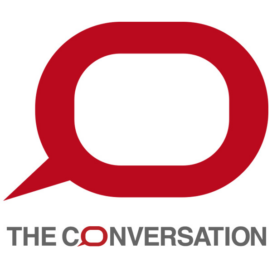Following an Evolving Narrative
James O’Rourke reflects on an unparalleled career researching and teaching crisis communication.
Published: April 10, 2025 / Author: Courtney Ryan
The name James Scofield O’Rourke IV promises a story. And during a career spanning 55 years, the American rhetorician and corporate communications professor has told countless ones. Many have served as cautionary tales, others have inspired and all have demonstrated the storyteller’s keen understanding of human folly as well as human gumption.
With retirement on the horizon, O’Rourke (BBA ’68) is reflecting on 35 years of teaching and learning at the University of Notre Dame’s Mendoza College of Business, where he founded the Fanning Center for Business Communication and served as the Arthur F. and Mary J. O’Neil Director of the center from 2008 to 2017.

James O’Rourke (Photo by Michael Caterina/University of Notre Dame)
Simply put, O’Rourke is an expert on crisis communication. As a lieutenant colonel in the United States Air Force and professor of public affairs at the Air University, he once prepped Air Force colonels to address the media. As a teaching professor of management and organization at Mendoza, he has published 23 books and nearly 450 case studies — the largest English-language collection of its kind — on management and corporate communication. As a member of the Arthur W. Page Society, he has hobnobbed with virtually every global chief communications officer from the Fortune 500, following along as many have waded through corporate scandals and catastrophes.
As O’Rourke sees it, the ability to weave together a narrative is just as important as gaining experience, and vice versa. “If you want to be a thought leader, it helps to have a thought,” he quipped. “You need to understand the industry, the competitors, the technology. But even if you’re really good at that, you’ve also got to be able to share your idea and offer it to the people who can help it get going. I love that combination of business and communication.”
Perhaps Notre Dame was always the inevitable destination for O’Rourke to habituate his brand of business and communication. His father attended the University and his mother enrolled at Saint Mary’s College in the 1940s. He studied management at the College of Business Administration, graduating in 1968. When he returned to South Bend with his daughter for an admissions interview at St. Mary’s in 1989, he suddenly found himself interviewing for a teaching position back at his alma mater.
What he thought would be a brief social visit with his former professor, Salvatore Bella, ended up changing the trajectory of his life for the next three-and-a-half decades. After Professor Bella confirmed that O’Rourke was considering military retirement, he sprang into action, quickly organizing a meeting between O’Rourke and Dean John “Jack” Keane. Two weeks later, the dean made an official offer.
“I’m grateful to Dean Keane for having the courage and good sense to hire me and take a chance on communication as part of the curriculum,” he said. “I love teaching, I love writing and studying, and I love researching communication. But in particular, I love Notre Dame.”
Soon after he arrived at the school in 1990, O’Rourke founded the Fanning Center for Business Communication, helping to cement Notre Dame as a leader in the field of communications. Providing resources, career counseling, and undergraduate and graduate courses, O’Rourke has probably taught more than 10,000 students.
“I wanted something that was independent of me in the sense that if I left or got hit by a truck, they wouldn’t simply close it,” he said. “I hope they would find another director for the Center because the Center would have a life of its own.”
Though the Fanning Center certainly does have a life of its own, it is borne of O’Rourke’s approach to teaching and researching crisis communication. The Center’s vast collection of case studies, for example, comes from the industry connections he has forged throughout his career and demonstrates how the world has — and hasn’t — changed over the past 40 years.
“I get calls every week asking, ‘Jim, do you have a case study that might help me through a tough circumstance?’ And I say, ‘Tell me more.’ Because if the crisis is, say, food contamination, we’ve got listeriosis, we’ve got E. coli, we’ve got metal shavings. You name it, we have it.”
He added that it’s not the sheer number or diversity of cases that make the library so useful, but also the ability to learn from what is revealed in the aggregate. “History repeats itself, but never in exactly the same way,” he said. “No two cases are the same.”
While some may want a clean solution to a crisis, O’Rourke revels in the ambiguity inherent to each case.
“Business communication cases lay out a really messy, inchoate kind of problem and ask a complicated string of questions,” he said. “One of the things that’s great about teaching this subject is that there is no school solution. If you are in finance, statistics or IT, there really may be a school solution. It’s essentially a mathematical problem, but crisis communication is different in each case. If you’ve developed a checklist or a playbook, it’s not a crisis. It’s another day at the office.”
O’Rourke would know. He has been privy to how corporate communications teams have navigated crisis after crisis, going back decades. He was on the phone with Linda Rutherford, chief administration officer at Southwest Airlines, when the airline’s operations nearly ground to a halt during the 2022 holiday travel season. At the Fanning Center’s annual Conference on Corporate Communication, he has hosted executives from Domino’s, Honda Motor Company, US Airways and Boeing, to name a few, who have candidly detailed how their companies recovered after crises. In a tragic twist, he was personal friends with Paula Prince, one of the victims of the Chicago Tylenol Murders case in 1982.
“Everybody said the Tylenol brand was dead,” he said, reflecting on the case in which at least seven people died from poisoning after ingesting pills that had been tampered with. “It was back in 120 days and the share price was back in six months. That’s a small miracle.”
Ultimately, crisis management is reputation management and reputation isn’t something one can achieve by following a playbook or running down a checklist. O’Rourke explained that whether a brand can recover or not depends less on the magnitude of the crisis and more on whether leadership truly understands and is committed to their company values.
“Brand is what you say you are. Reputation is what everybody else says you are. And, in turn, authenticity is whether you actually are who you say you are,” he said. “So, in a virtuous circle, who you are drives what you do. What you do drives how you are perceived by others. How you are perceived drives who you are. You either double down on who you are, or you change. It’s true in every crisis, yet no two crises are the same.”
This doesn’t mean that companies should forgo planning. O’Rourke’s experience in the Air Force taught him that contingency plans are crucial for survival, and the same goes for any company. As technology has evolved and news cycles have shifted to a constant, 24-hour flow, he has witnessed more companies adopt such contingency models.
“You go back 20 years and people didn’t even have a plan. But with the internet and the global nature of business, that’s had to change,” he said. “One of the things we know with certainty is if you don’t plan and you don’t exercise the plan and you don’t keep smart people involved, it’s not going to work.”
While O’Rourke has witnessed rapid change and industries shift and shake following horrific tragedies, he maintains an optimistic outlook about the future. Much of this he owes to his students and the Notre Dame campus that has anchored his scholarship since he enrolled as an undergraduate in 1964. He loves standing behind the bench during matches as an informal faculty advisor to the women’s lacrosse team. He often refers to his colleagues as dear friends or “a real prince of a guy” and confides that he knows virtually everyone except for the occasional new guy.
“I love this place for a thousand reasons,” he said. “The community is very supportive and I have access to just about anybody I want to speak to. I have access to their opinions and expertise. If I’m looking at a math problem and don’t trust my work on a chi-square test, I can walk down the hall and find six people who know how to do that.”
He admires how smart his undergraduate students are and claims that they’re far more intelligent than his own classmates were. As for his graduate students, he encourages them to embrace the virtuous circle the environment fosters and not hunker down in the Mendoza complex studying all the time.
“This place will change you if you let it,” he said. “If you just work on finance problems or algorithms, you’re not going to be much different than when you arrived. More employable, yes, but if you buy into the values of this place, it will change you prominently and in a wonderful way. You’ve got to let it do that.”
Related Stories



